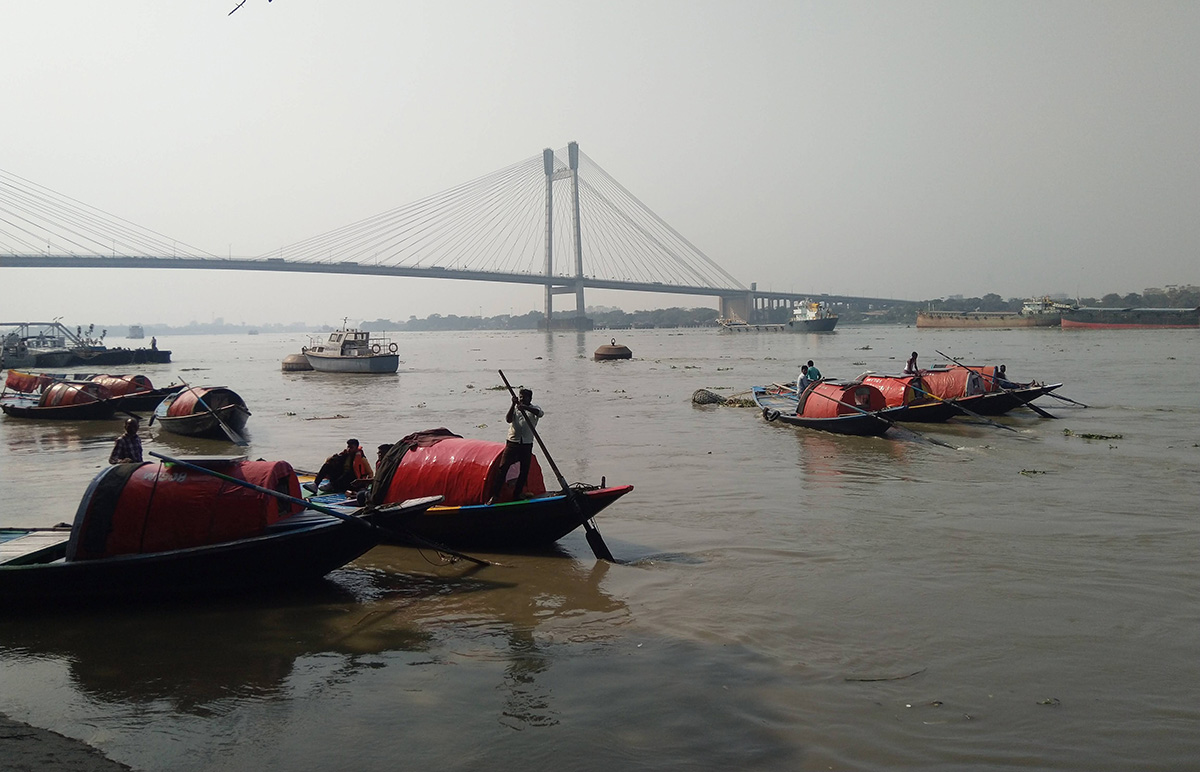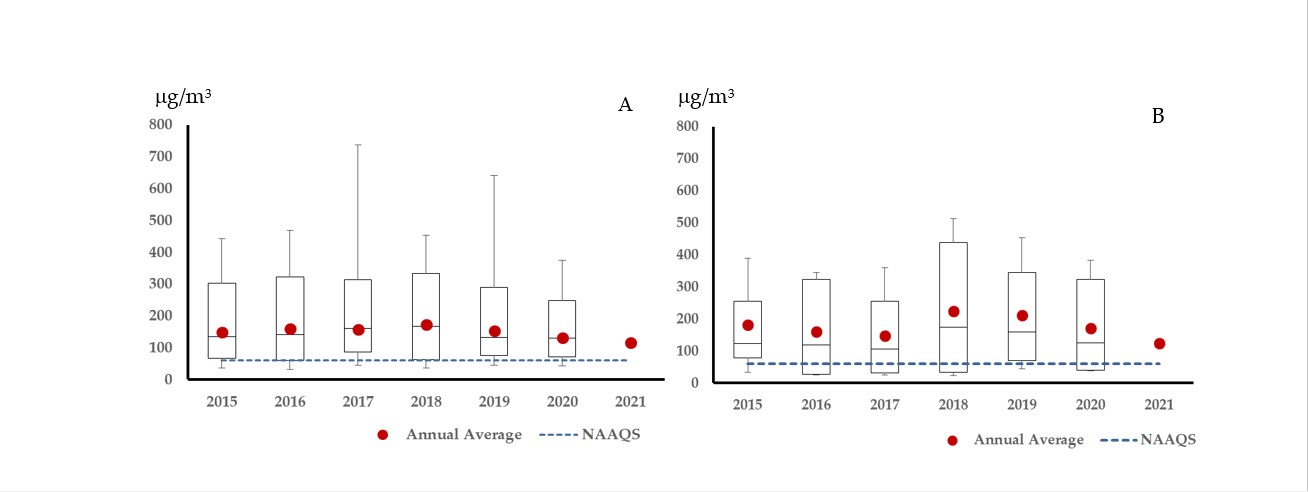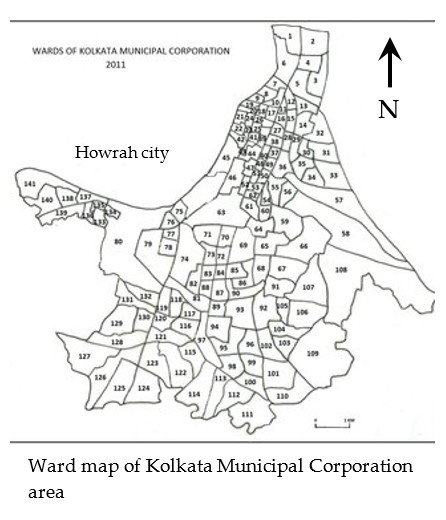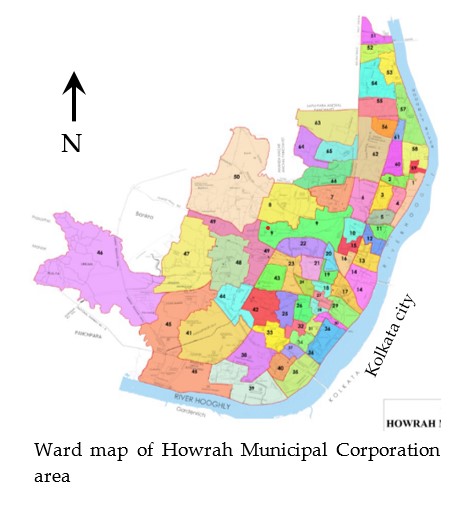Air Pollution Source Apportionment and Carrying Capacity of Kolkata and Howrah City

Kolkata is the third most densely populated city in South Asia and the third largest economy in India, after Mumbai and Delhi. Nevertheless, the city is facing nowadays is the unequal distribution of this economic growth, as the urbanisation of rural areas, access to facilities, and income increases are concentrated in certain areas more than in others. Kolkata and Howrah municipal corporations have developed as twin cities with the increased economic activities in Kolkata. As a result of the increased urbanization of rural areas, the ambient air pollution level in and around Kolkata has increased in recent times.
Air pollution is a major planetary health risk, with India estimated to have some of the worst levels globally. However, the impact of air pollution is not limited to health but extends to agriculture and the general well-being of humans and other living organisms. To address the deteriorating ambient air quality nationwide, the government of India launched the National Clean Air Programme (NCAP) in 2019. Kolkata city and Howrah city are listed under the non-attainment city list under the NCAP due to annual ambient PM10 concentration above the National Ambient Air Quality Standard since 2015 (Figure 1)

Figure 1. Trend of annual ambient PM10 concentrations in Kolkata (A) and Howrah (B) municipal corporation area during 2015 to 2021
Kolkata city is spread over an area of 206.08 sq Km. The city is governed by the Kolkata Municipal Corporation (KMC). There are 141 wards of the municipal corporation divided into fifteen boroughs. The city is located on the eastern flank of the river Hooghly about 80 Km away from the Bay of Bengal. The city ranks third among the metropolitan cities in India in respect of ambient PM10 concentration.


Howrah City is located in the Howrah district, on the western flank of the river Hooghly, opposite the Kolkata Municipal Corporation area. The city is spread over a 63.55 sq Km area and is governed by the Howrah Municipal Corporation (HMC). There are sixty-six wards in the municipal corporation. Ambient PM10 concentration in Howrah city is reported highest (125 g/m3) in West Bengal during 2021 (EnviStat India, 2022).
The main objective of the NCAP is to reduce the ambient PM2.5 concentrations by 20–30% as compared to 2017 in the non-attainment cities by 2024 (NCAP, 2019). All the respective state pollution control boards have been guided by the Central Pollution Control Board (CPCB) to prepare the action plan in a collaborative and participatory approach involving relevant Central Ministries, State Governments, local urban bodies and other stakeholders to achieve the target of the NCAP. Since air pollution is not a localized phenomenon, the effect is felt in cities and towns far away from the source, thus creating the need for regional-level initiatives through inter-state and inter-city coordination in addition to multisectoral synchronization. It is important to identify the major sources of ambient air pollution in a particular area before designing an effective air pollution management action plan for a particular city or area. According to the NCAP, “the city action plans need to be guided by a comprehensive science-based approach, involving source apportionment studies”.
A ten-member Air Quality Monitoring Committee (AQMC) was constituted in 2018 for the preparation of the Air Quality Action Plan for Kolkata for attaining NAAQS. In pursuance to the order of the Hon'ble National Green Tribunal, Eastern Bench in respect of O.A. No. 33 of 2014, the West Bengal Pollution Control Board had engaged the CSIR-National Environmental Engineering Research Institute (CSIR-NEERI), Nagpur for conducting the PM10 and PM2.5 Source Apportionment and Emission Inventory Study for Kolkata and Howrah cities. CSIR-NEERI has completed the study work and submitted the Final Report of the project in December 2019. Several air pollution management activities have already been implemented in Kolkata and Howrah following the source apportionment study and Air Quality Action plan prepared by the AQMC. However, still, the ambient concentrations of particulates remain above the NAAQS in Kolkata and Howrah cities.
In order to understand the effectiveness of the measures implemented in these cities, the West Bengal Pollution Control Board (WBPCB) invited The Energy and Resources Institute (TERI), New Delhi to submit a proposal to carry out an updated comprehensive Air Pollution Source Apportionment Study and Atmospheric Carrying Capacity for Kolkata and Howrah Municipal Corporation, under NCAP to develop a roadmap to achieve the NCAP target for both cities.
Following above mentioned broad scope, the main objectives of the consultancy are:
1. Assess the ambient air quality of Kolkata and Howrah city during the Kali Pujo, including pre-and post-Kali Pujo
2. Assess the ambient air quality and identify the sources of ambient particulate matter (PM10 and PM2.5) in different seasons in Kolkata and Howrah city
3. Update the air pollution emission inventory with all the possible sources of air pollution in both Kolkata and Howrah city
4. Identify regional and local level contributions to ambient particulate matter concentrations of Kolkata and Howrah city
5. Carry out the atmospheric assimilation capacity for the Kolkata and Howrah Municipal Corporation Area
6. Analyze the health impact of ambient air pollution on residents of Kolkata and Howrah Municipal Corporation area using the available patient database.
7. Review the action plan already being implemented and suggest interventions and prioritize the areas for immediate action for a significant reduction in the particulate matter pollution in both Kolkata and Howrah Municipal Corporation areas.
TERI will collaborate with a state-level institution during the study to develop the capacity local-level vis-à-vis logistic and local-level knowledge support during the period of the study. Two training programs related to the study will also be organized to develop the local-level capacity to verify the progress of the ambient air quality management plans to be developed towards the end of the study.
